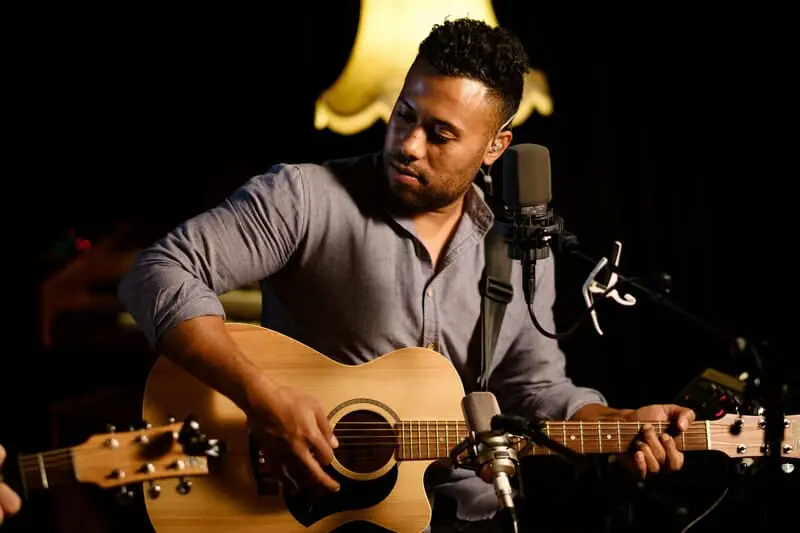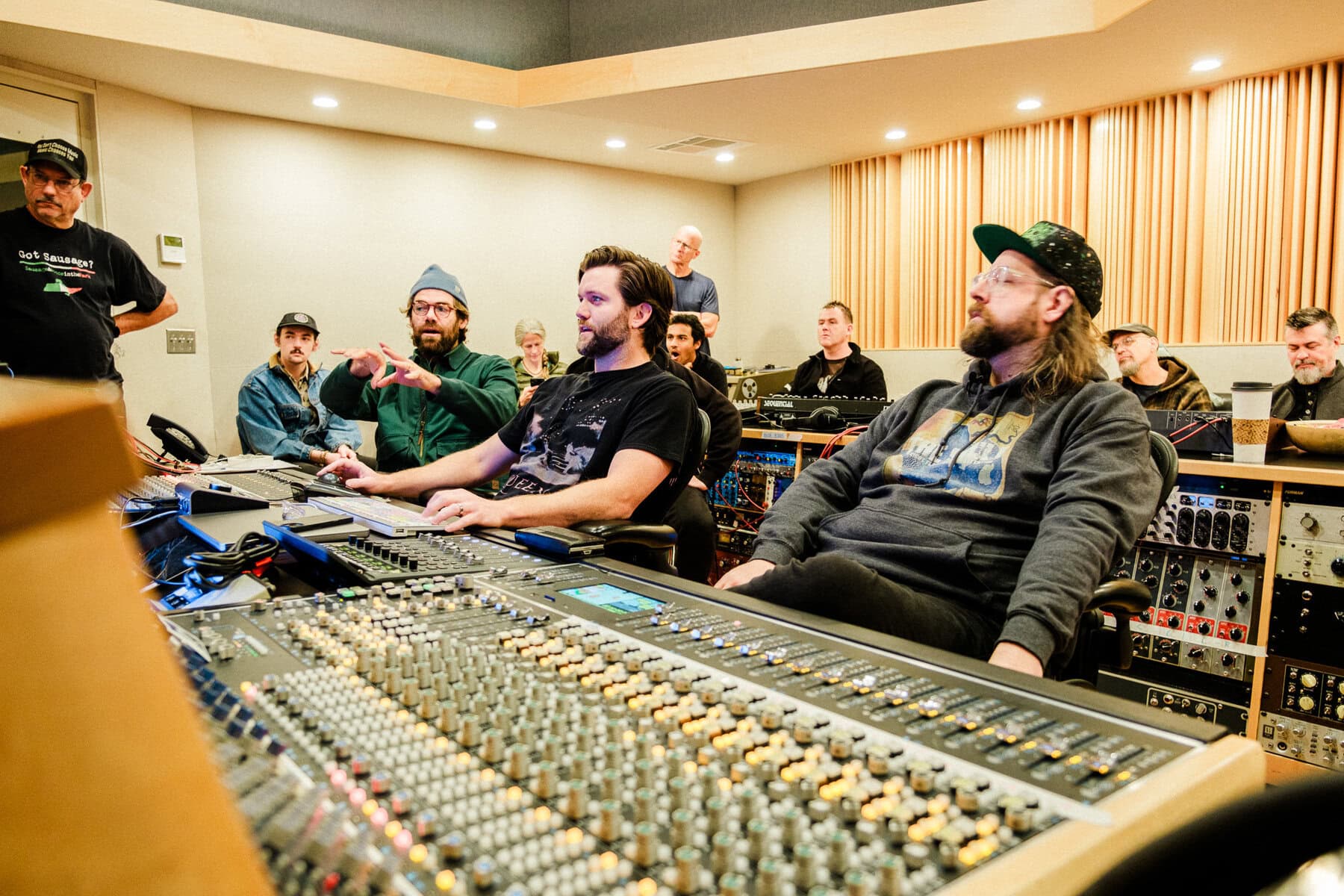Cover songs can do wonders for artists.
Think about all the cover songs better than the originals…
Nine Inch Nails’ “Hurt” covered by Johnny Cash
Otis Redding’s “Respect” covered (and reworked) by Aretha Franklin.
Phil Medley and Bert Berns’ “Twist And Shout” covered by The Beatles.
I could go on, but I digress.
Covering someone else’s song is not only super fun, it could also be just what fans are looking for.
So in this post, I’ll cover how to approach covering a song and all the steps involved.
Why cover a song?

The main reason to cover a song is for fun. As is always the case with music, only do it if you’re excited about it.
But there are also three reasons covering a song could help you in your music career…
Helps you improve at your instrument

Listening to a song and playing it are two different experiences. And if you really want to get to know a song, play it.
By playing it, you can get better at your instrument.
The song may have a chord progression your hands are not used to playing. And by developing that new muscle memory, you’re creating new neural pathways.
Instead of starting with more advanced scales or techniques, you can learn to play someone else’s song. It’s a more fun way to improve your skills.
It helps you step outside what you’re used to doing, which is the only way to get better.
Gives you production inspiration

By playing someone else’s song, you’re basically dissecting it.
You’re looking at the chord progression, the melody, and the difference between the naked version and the recorded version.
Because you know what the song sounds like with just an instrument, you can see the path they took from a simple song to a fully produced song.
This can give you inspiration for your own production choices. You can borrow ideas from the song(s) you cover.
You can get inside the mind of the artist and/or producer.
Connects you with your fans

People love singing along to songs they know and love. Why do you think karaoke is such a thing?
And people love hearing a new version of one of their favorite songs. They can sing along, but it’s an interesting rendition they’ve never heard before.
This helps you connect with your current fans and possibly attract some new ones.
How to produce a cover song
To end up with the most authentic and interesting cover song possible, here are some tips you can follow.
Produce it in your style

How boring would it be if you produce someone else’s song the exact way they did?
The whole point of covering a song is to perform it in your style. That’s why people like covers. It’s interesting to hear different artists’ interpretations of a song.
Jimi Hendrix was a master at this. He could perfectly render any song into his signature style of chunky riffs and powerful, yet laid back crooning.
So play the song in your style, don’t just mimic the original. If you wrote the song, how would you produce it?
Keep it familiar
Yes, you want the cover to be authentic to you. But you also want it to still be familiar.
Keep it recognizable. The melody and lyrics should pretty much stay the same. Those are the elements people know and sing along to.
Have fun with the chords and the arrangement. Just produce it so people can still sing with it.
Add something new

While keeping the cover song recognizable, add something new.
This could be as simple as using alternate chords. Or you could add a musical turnaround. Or maybe you tag a lyric that wasn’t tagged in the original.
Devo reworked The Rolling Stones’ hit “Satisfaction” into an avant garde commentary on consumer culture
Adding something small can be a way to surprise the listener while keeping the song true to what people love.
How to legally cover a song

Now let’s talk about the not-so-fun-but-necessary topic of legality.
You do not want to commit a crime by not getting permission to cover a song. It could ruin you financially and destroy your reputation.
Releasing a recorded version of a cover
Before you decide on a song to cover, check to see if it’s in the public domain. If the song was released (i.e. has a publication date) before 1925, it’s in the public domain.
That means it’s fair game.
If it’s in the public domain, you don’t need any licenses or permissions before recording and releasing the song. Anyone anywhere can cover it.
Now, if the song was released in 1925 or after, you need legal permission before you cover it. You need a mechanical license.
The best way to acquire a mechanical license is to go through a company that will get it for you.
Here are a few companies that let you easily obtain a mechanical license:
- Songfile: in most cases, they’ll get you the license in 24 hours.
- Easy Song Licensing: talk to a real person who will handle the process for you.
- Soundrop: a digital distributor who also clears cover songs for you.
Keep in mind, this is for United States songs only. The song has to have already been released in the U.S., and your version can only be released in the U.S.
And this does not give you permission to use your cover in videos. It’s for audio only.
Performing a cover song live

Performing a cover live is much simpler than releasing a recorded version. You don’t need a license or any kind of permission beforehand.
You can walk onto a stage and play whatever song you want.
The venue (bar, restaurant, concert venue) is responsible for acquiring a license for hosting musical performances.
They get these licenses from Performance Rights Organizations (PROs), like BMI and ASCAP.
These licenses can mean performers at their establishment can perform cover songs live.
However, you should double-check with the venue to see if they have the proper license so you can play cover songs.
After you perform live, you can submit your setlist to the PRO you’ve registered your songs with. This tells the PRO to pay you for the performance royalties you’re owed for playing your songs.
But…
You should also include the cover songs you played on your setlist. This ensures the songwriter gets paid for your performance of their song.
You should be able to find the cover song by searching the PROs database, which you can access when you list the songs you played.
Conclusion
Now that you know all the steps to recording or performing a cover song, nothing’s stopping you.
Your version of someone else’s song could be just what the music world needs.









